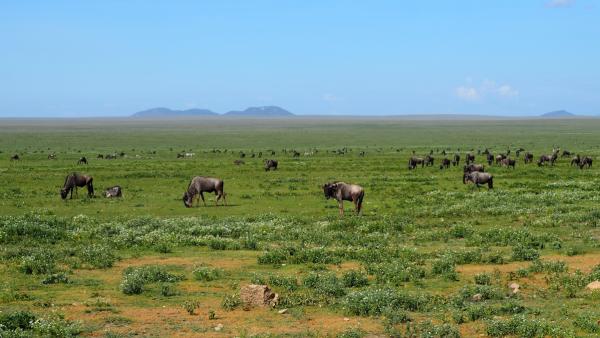
Last year, when travel was still possible, Anne and I had the trip of a lifetime. After reporting on a conference in Ethiopia, we flew to Tanzania for a short safari in the Serengeti. It was during the "Great Migration" — so-called because each year it’s the largest animal migration on the planet. Two million wildebeest, hundreds of thousands of zebras, a dozen species of antelope — and of course the large predators who stalk them — take part in the natural life cycle that’s remained mostly unchanged for thousands of years. This is a protected wilderness area that’s also inhabited by the Maasai, who are models for how people can live alongside wildlife in a sustainable way.
Serengeti means “endless plains” and we could see why. It was humbling — and exhilarating — to be so tiny in the midst of this overwhelming landscape. In just the short time we were there, we began to feel the natural rhythm of the area: a thousand wildebeest walking…and walking….in single file across vast distances; dozens of hippos crowded together, snorting, in a large mud hole; lions lounging until the pride converges on a kill. What I found startling was how little the animals cared about us. Of course, they knew we were there, but most barely bothered to look at us. We were utterly insignificant.
Anne and I were fortunate to have found a remarkable guide, Moses Augustino Kumburu, a naturalist who’s been working in the Serengeti for decades. By the second day Anne had pulled out our recording equipment and was getting a running commentary from Moses about what we were seeing. You can hear excerpts from those conversations on this week’s show “Mysteries of Migration,” which examines both animal and human migration. You’ll also find a collection of photos from our trip on our website.
–Steve
